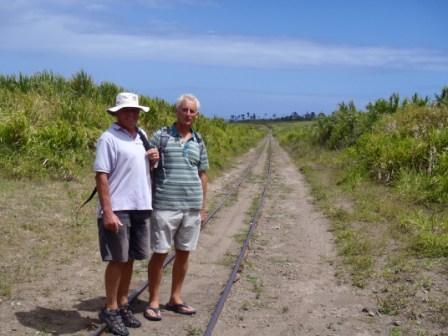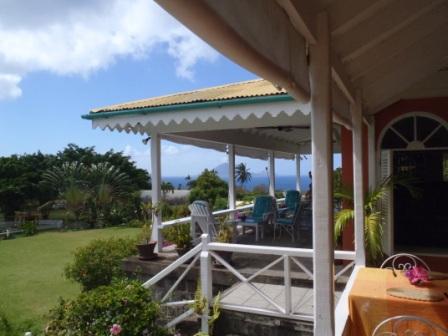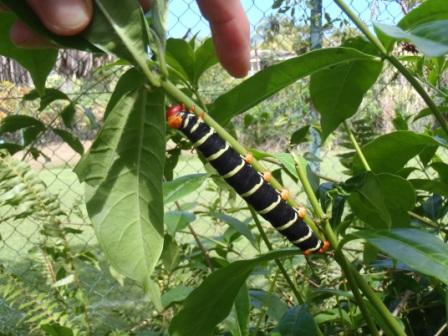St Kitts "!7:17.4N 62:43.7W"

VulcanSpirit
Richard & Alison Brunstrom
Fri 4 Mar 2011 11:34
|
St Kitts & Nevis is a two island Federation,
population in total about 50 000. Nevis is famous as the place where Nelson
married Fanny Nisbet, under a tree that still stands. It was also the birthplace
of Alexander Hamilton, First US Treasury Secretary. After that its history
rather stopped. St Kitts was the first English settlement in the Caribbean
in the middle of the seventeenth century. After a failed experiment in growing
tobacco the settlers hit upon sugar cane (a native of SE Asia) and struck gold.
Initially Irish indentured labourers were used (sugar cane is a very labour
intensive crop), later replaced with slaves from Africa. Sugar lasted
until 2005 when the government closed the by then uncompetitive industry,
throwing 12% of the population out of work overnight.
The photos were taken around
the Rawlins Plantation House in the north of the island. the first
photo shows the railway (the last working line in the Caribbean outside
Cuba) built around the island in 1912 to take cane to a central processing plant
(the harvested cane needs to be processed within 24 hours of cutting) - prior to
this all plantations had to process it on site. The line is now run as a tourist
attraction for cruise ship visitors. The cost of a ticket is US$90 for an 18km
ride, even more expensive than the UK which I didn't think was
possible, against about US$1.50 for the bus trip (which is what we did).
The second shot shows the view from the veranda where we had a very nice lunch,
looking out towards the Dutch island of St Eustatius (Statia) ten kilometres to
the north. The final photo shows a giant caterpillar of an unfortunately
(to me) unknown species. St Kitts has a very impoverished fauna and flora
because the island was more or less clear-felled for sugar. Lots of tragic
extinctions resulted. But it does have 100 000 green vervet monkeys introduced
from West Africa as pets by the French who as usual round here once had the
island. They are now a particularly annoying pest, taking just one bite from a
fruit before discarding it.
|


